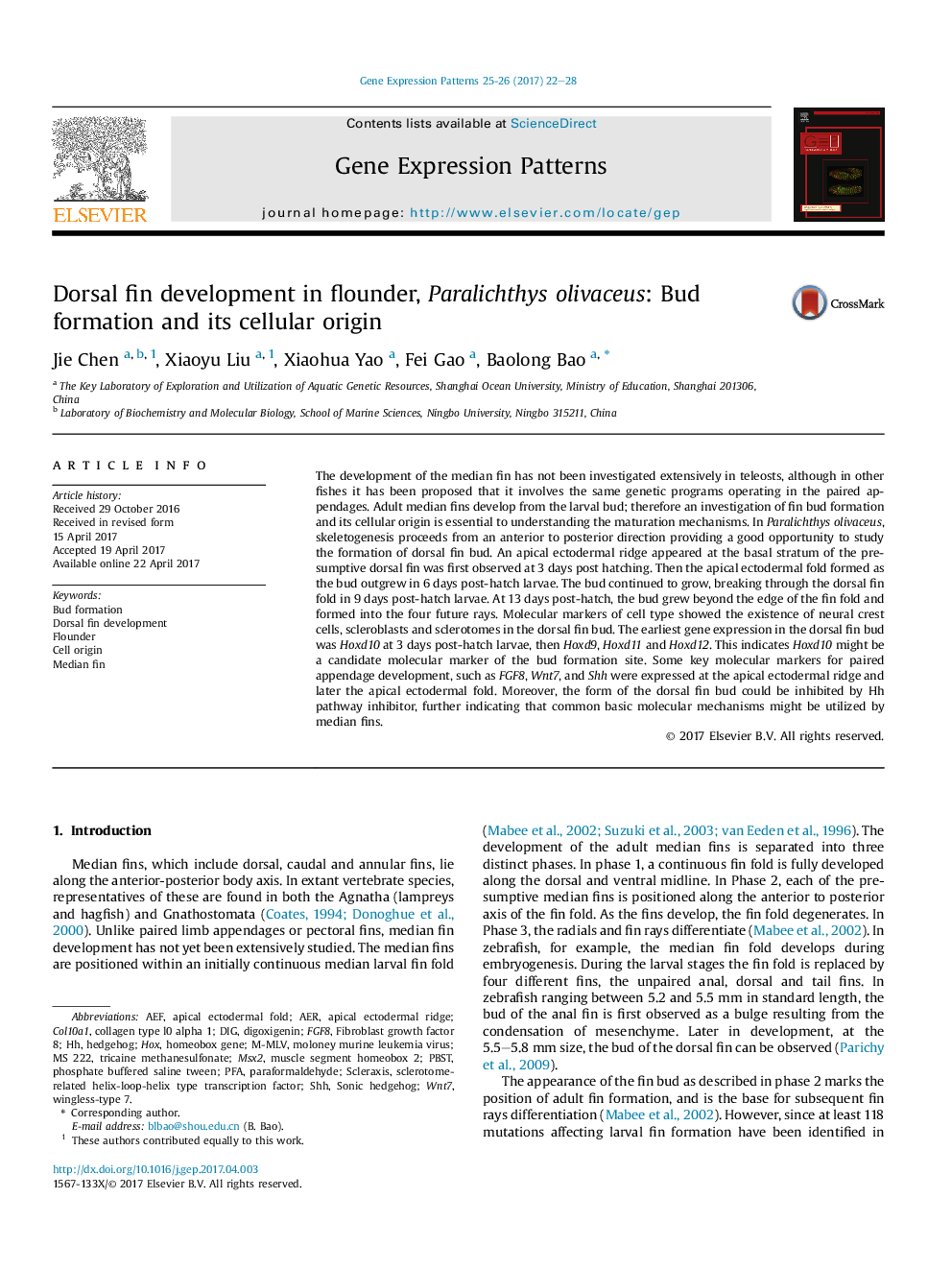| کد مقاله | کد نشریه | سال انتشار | مقاله انگلیسی | نسخه تمام متن |
|---|---|---|---|---|
| 5532559 | 1550048 | 2017 | 7 صفحه PDF | دانلود رایگان |

- We provide first description of the dorsal fin bud in flatfishes.
- The dorsal fin bud consists mainly of neural crest cells in P. olivaceus.
- Key moleculars for paired fin development were expressed in the dorsal fin bud.
- The form of the dorsal fin bud could be inhibited by Hh pathway inhibitor.
The development of the median fin has not been investigated extensively in teleosts, although in other fishes it has been proposed that it involves the same genetic programs operating in the paired appendages. Adult median fins develop from the larval bud; therefore an investigation of fin bud formation and its cellular origin is essential to understanding the maturation mechanisms. In Paralichthys olivaceus, skeletogenesis proceeds from an anterior to posterior direction providing a good opportunity to study the formation of dorsal fin bud. An apical ectodermal ridge appeared at the basal stratum of the presumptive dorsal fin was first observed at 3 days post hatching. Then the apical ectodermal fold formed as the bud outgrew in 6 days post-hatch larvae. The bud continued to grow, breaking through the dorsal fin fold in 9 days post-hatch larvae. At 13 days post-hatch, the bud grew beyond the edge of the fin fold and formed into the four future rays. Molecular markers of cell type showed the existence of neural crest cells, scleroblasts and sclerotomes in the dorsal fin bud. The earliest gene expression in the dorsal fin bud was Hoxd10 at 3 days post-hatch larvae, then Hoxd9, Hoxd11 and Hoxd12. This indicates Hoxd10 might be a candidate molecular marker of the bud formation site. Some key molecular markers for paired appendage development, such as FGF8, Wnt7, and Shh were expressed at the apical ectodermal ridge and later the apical ectodermal fold. Moreover, the form of the dorsal fin bud could be inhibited by Hh pathway inhibitor, further indicating that common basic molecular mechanisms might be utilized by median fins.
Journal: Gene Expression Patterns - Volumes 25â26, November 2017, Pages 22-28